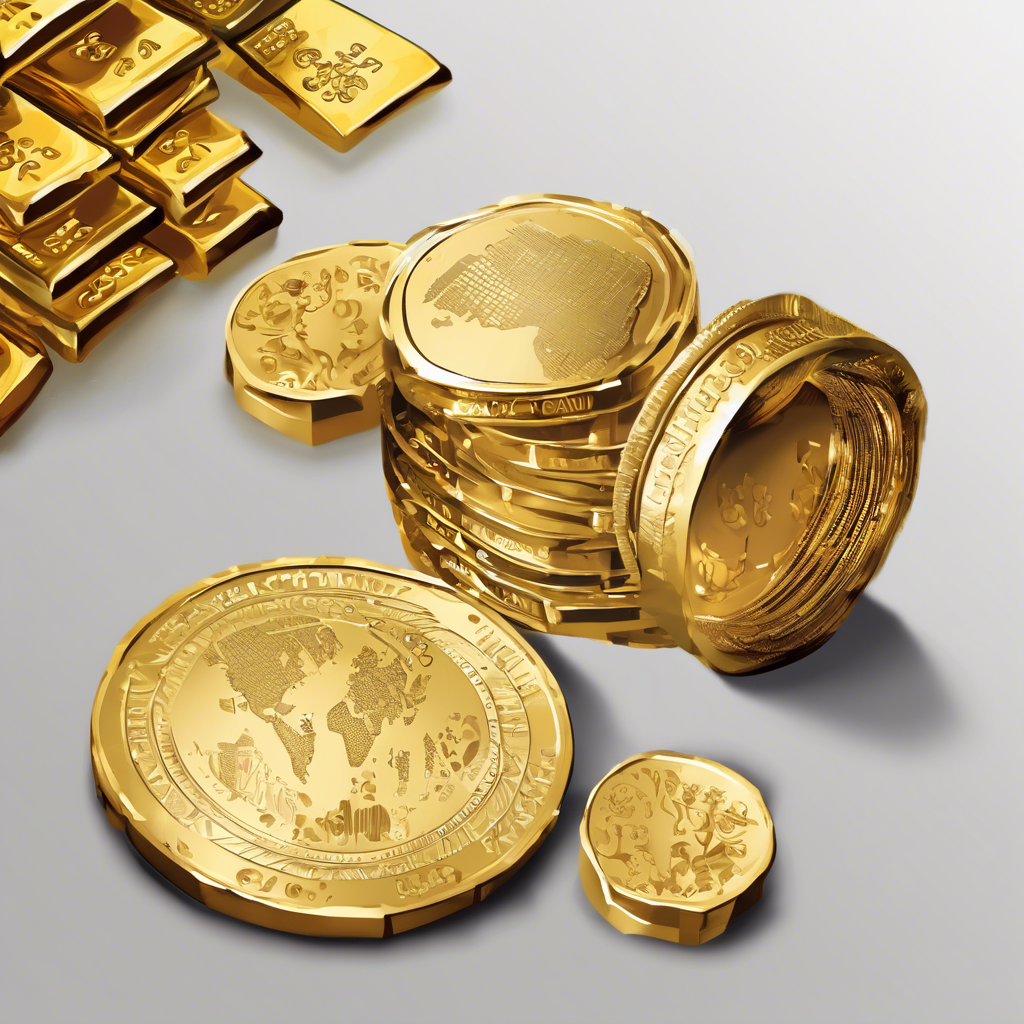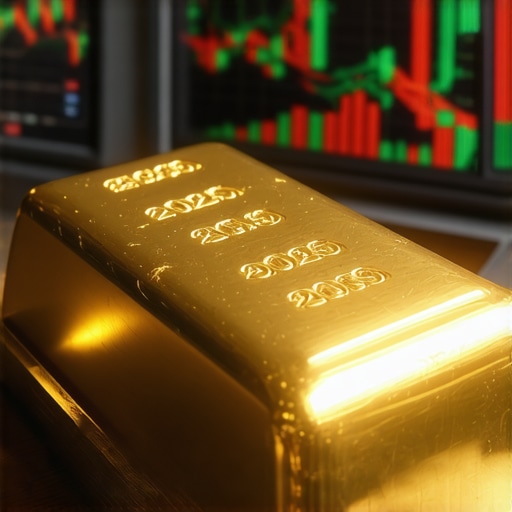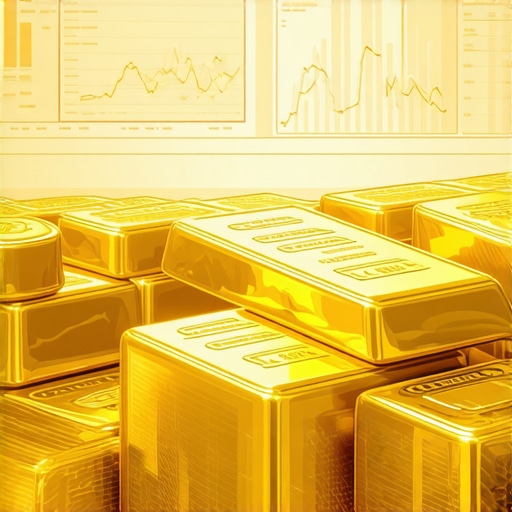In today’s volatile economic landscape, gold has emerged as a significant safe haven for investors. Analyzing the impact of global events on gold prices reveals how external factors can influence market behavior and investor sentiment. From geopolitical tensions to economic crises, understanding these dynamics is crucial for making informed investment decisions in gold.
The Influence of Geopolitical Events on Gold Prices
Geopolitical events are one of the primary drivers of gold price fluctuations. When tensions rise between nations or regions, investors often turn to gold as a hedge against uncertainty. For instance, during conflicts such as the Ukraine crisis, gold prices surged as investors sought refuge from potential market instability.
Moreover, global events like trade wars can affect gold prices significantly. As countries impose tariffs or engage in trade disputes, the resulting economic instability often leads investors to flock to gold. This behavior is evident during times of heightened uncertainty, where historical data shows a clear correlation between geopolitical tensions and rising gold prices.
Economic Crises and Their Effect on Gold Valuation
Economic downturns, such as recessions or financial crises, also play a pivotal role in shaping gold prices. When economies falter, central banks may lower interest rates to stimulate growth, which can lead to a depreciation of fiat currencies. In such scenarios, gold typically appreciates in value as it is viewed as a reliable store of wealth. For example, during the 2008 financial crisis, gold prices reached record highs as investors sought security amidst a collapsing financial system.
Additionally, inflationary pressures can significantly impact the appeal of gold. When inflation rises, the purchasing power of money decreases, leading investors to consider gold as a safeguard against currency devaluation. Historical trends indicate that periods of high inflation often coincide with increased gold demand, further driving prices up.
For those interested in understanding how these factors could play out in the future, it is essential to stay updated with gold market analysis. Regularly referring to resources like Gold Market Analysis: Current Trends and Future Predictions can provide insights into how ongoing global events may influence gold prices.
Central Bank Policies and Gold Prices
The role of central banks cannot be overlooked when analyzing the impact of global events on gold prices. Central banks often hold significant gold reserves and their policies regarding gold purchases can affect market sentiment. For instance, if a central bank announces an increase in gold purchases, it can signal confidence in the metal’s long-term value, leading to price increases.
Moreover, central banks’ interest rate policies play a crucial role. Lower interest rates tend to favor gold investment, as the opportunity cost of holding non-interest-bearing gold decreases. Understanding these central bank dynamics is vital for investors looking to navigate the complexities of gold pricing.
In conclusion, analyzing the impact of global events on gold prices involves a multifaceted approach that considers geopolitical tensions, economic crises, and central bank policies. By staying informed and utilizing reliable resources, investors can better position themselves in the gold market and capitalize on potential opportunities.
The Impact of Global Events on Gold Prices: Understanding the Role of Central Banks
Central banks play a crucial role in shaping the gold market, particularly during times of economic uncertainty. Their purchasing decisions can significantly influence gold prices, making it essential for investors to track these developments closely. For instance, when central banks increase their gold reserves, it often indicates a strategy to hedge against potential economic downturns or inflationary pressures. This behavior can lead to increased demand for gold, driving prices higher.
Analyzing Central Bank Gold Purchases
Central banks globally have been actively accumulating gold in recent years. Countries like China and Russia have increased their gold reserves as part of a broader strategy to diversify away from the U.S. dollar. This trend highlights the growing recognition of gold’s value as a safe-haven asset. Investors contemplating their gold investment strategies should consider how central bank activities might lead to fluctuations in gold prices. Tracking insights from Gold Market Analysis: Current Trends and Future Predictions can provide valuable information on this topic.
The Relationship Between Inflation and Gold Prices
Inflation is another critical factor that affects gold valuations. When inflation rises, the real value of currency declines, prompting investors to seek alternatives like gold. Historically, gold has been viewed as a hedge against inflation, making it an attractive investment during periods of rising prices. For example, during the 1970s, when inflation rates soared, gold prices experienced substantial increases as investors sought to preserve their purchasing power.
Understanding Gold as a Hedge Against Inflation
As inflation rates continue to fluctuate, many investors are turning to gold as a protective measure. This trend is particularly evident in times of economic instability, where traditional investments may falter. By investing in physical gold or gold-backed assets, individuals can safeguard their wealth against the eroding effects of inflation. For more insights into this strategy, consider exploring Using Gold as a Hedge Against Inflation: Strategies.
Gold Demand Trends and Market Fluctuations
The demand for gold can also be influenced by various factors, including jewelry consumption, industrial use, and investment demand. Understanding these trends is essential for investors who want to make informed decisions. For instance, during times of economic growth, jewelry demand may rise, leading to increased gold prices. Conversely, in economic downturns, investment demand might dominate, further affecting market dynamics.
Investment Demand Versus Jewelry Demand
Investment demand for gold often spikes during periods of market volatility. Investors tend to flock to gold as a safe haven, driving prices upward. In contrast, when the economy is stable, jewelry demand may take precedence, influencing price dynamics differently. Staying informed about these trends can help investors anticipate market movements. For a deeper dive into the specifics of gold demand trends, refer to Gold Demand Trends: What Drives Prices Upward?.
Global Economic Indicators and Their Influence on Gold Prices
Economic indicators such as GDP growth rates, employment figures, and consumer confidence can provide insights into the broader market conditions affecting gold prices. For example, strong economic growth may lead to reduced demand for gold as an investment, while weak economic indicators can trigger increased interest in gold as a safe asset. Investors should remain vigilant in analyzing these indicators to gauge potential gold price movements.
In conclusion, understanding the intricate relationship between global events, central bank policies, inflation, and demand trends is crucial for investors looking to navigate the gold market effectively. By leveraging analytical resources and staying informed, individuals can make strategic decisions that align with their investment goals.
Key Factors Influencing Gold Prices
Gold prices are subject to a myriad of influences that can fluctuate rapidly, making it essential for investors to stay informed. Key factors include geopolitical tensions, currency fluctuations, and changes in interest rates. For example, when geopolitical tensions rise, investors often turn to gold as a safe haven, leading to increased demand and higher prices. Conversely, a strengthening U.S. dollar can make gold more expensive for foreign investors, potentially reducing demand and impacting prices.
Geopolitical Tensions and Gold Investment
Investors should closely monitor global political events, as uncertainty can lead to spikes in gold prices. Historical data shows that during conflicts or political unrest, gold often sees significant price appreciation. For instance, the uncertainty surrounding Brexit in 2016 led to a notable increase in gold prices as investors sought stability. Staying updated on geopolitical developments is vital for making informed decisions in your gold investment strategy. To learn more about how such events impact the gold market, check out The Impact of Global Events on Gold Prices: Understanding the Role of Central Banks.
The Role of Interest Rates in Gold Pricing
Another critical factor influencing gold prices is the interest rate environment. Typically, when interest rates rise, the opportunity cost of holding gold increases, leading to a potential decline in demand. Conversely, when interest rates are low or negative, gold becomes more attractive as it does not yield interest, encouraging investment. Understanding this dynamic can help investors time their purchases effectively.
Interest Rates and Inflation: A Dual Influence
The relationship between interest rates and inflation further complicates the gold market. In periods of rising inflation, central banks may choose to keep interest rates low to stimulate economic growth, making gold more appealing. This dual influence highlights the importance of monitoring both interest rates and inflation trends. For more insights on this topic, refer to Using Gold as a Hedge Against Inflation: Strategies.
Gold Supply Dynamics and Market Trends
The supply side of the gold market is equally important. Factors such as mining output, recycling rates, and central bank sales can affect the overall supply of gold available in the market. For example, when mining production declines due to regulatory challenges or depletion of reserves, it can lead to upward pressure on prices. Moreover, understanding gold supply dynamics can enhance your investment strategy. For a comprehensive overview of the factors driving gold demand, check out Gold Demand Trends: What Drives Prices Upward?.
The Importance of Monitoring Gold Production
Investors should also keep an eye on the performance of major gold-producing countries. Countries like China, Australia, and Russia play significant roles in the global gold supply chain. A decrease in production from these regions can lead to tighter supply and higher prices. Additionally, geopolitical stability in these areas can impact mining operations and, subsequently, gold prices. Staying informed about global mining trends is crucial for anticipating market movements.
Strategies for Investing in Gold
Given the complexities of gold pricing, having a well-rounded investment strategy is essential. Diversifying your portfolio with a mix of physical gold, gold stocks, and gold ETFs can mitigate risks associated with price fluctuations. Each investment type offers unique advantages, and understanding these can help you build a resilient gold investment strategy. To explore more about gold investment options, check out Best Gold Investments for Beginners: Tips and Strategies.
In summary, navigating the gold market requires a solid understanding of various influencing factors, including geopolitical events, interest rates, and supply dynamics. By staying informed and strategically diversifying your investments, you can position yourself for success in the ever-changing landscape of gold prices.
Understanding Gold Investment Options
As you consider entering the gold market, it’s vital to understand the various options available for investing in gold. Each type has its unique benefits and risks, making it crucial to choose the right investment strategy based on your financial goals. The most common forms of gold investments include physical gold, gold stocks, gold ETFs, and gold mutual funds. For a comprehensive overview of these options, visit Gold Investment: A Comprehensive Guide to Buying Gold.
Physical Gold: Pros and Cons
Investing in physical gold can take the form of bullion bars, coins, or jewelry. The primary advantage is the intrinsic value and tangibility of physical gold. Investors can hold their assets directly, which can be reassuring during economic uncertainty. However, physical gold also comes with storage costs and potential liquidity issues. For tips on making smart purchases, check out How to Buy Gold Coins: A Complete Guide for Investors.
Gold Stocks: A Dynamic Investment
Investing in gold mining companies is another viable strategy. Gold stocks can offer leveraged exposure to gold prices, meaning their value can rise faster than physical gold during bull markets. However, they also come with operational risks related to mining operations, management, and geopolitical factors. To explore the dynamics of investing in gold stocks, read Key Metrics in Analyzing Gold Mining Stocks.
Diversifying with Gold ETFs
Gold Exchange-Traded Funds (ETFs) provide an accessible way to invest in gold without the need to store physical assets. They track the price of gold and offer liquidity similar to stocks. Gold ETFs can be an excellent option for investors looking for diversification in their portfolios, especially those new to gold. For further insights, see Investing in Gold ETFs: A Smart Choice for Investors.
Gold Mutual Funds: A Diversified Approach
Gold mutual funds invest in a mix of physical gold, gold stocks, and ETFs. They offer diversification and professional management, making them suitable for investors who prefer a hands-off approach. Understanding the fees and expense ratios associated with mutual funds is essential for maximizing your returns. For an in-depth look at mutual funds, check out Exploring Gold Mutual Funds: What Investors Should Know.
Long-Term vs. Short-Term Gold Investment Strategies
Determining your investment horizon is crucial when investing in gold. Long-term investors may focus on holding physical gold or gold stocks, while short-term traders might capitalize on price fluctuations through gold futures or ETFs. Each strategy has its own risk profile and potential returns. To explore this further, visit Long-Term vs. Short-Term Gold Investments: What’s Best?.
Monitoring Market Trends: Staying Informed
Staying updated on market trends is essential for gold investors. Economic indicators, geopolitical events, and central bank policies can all influence gold prices. Regularly monitoring these factors will help you make informed decisions about your investments. For a detailed analysis, see Gold Price Analysis: Understanding Market Fluctuations.
Utilizing Gold as a Hedge Against Inflation
Gold has historically been viewed as a hedge against inflation. During periods of rising prices, gold tends to hold its value better than fiat currencies. Understanding how to utilize gold as a protective asset in your portfolio can enhance your investment strategy. For strategies on using gold as a hedge, refer to Using Gold as a Hedge Against Inflation: Strategies.
Conclusion: Building Your Gold Investment Strategy
In conclusion, investing in gold requires a thorough understanding of various options and strategies. Whether you choose to invest in physical gold, gold stocks, ETFs, or mutual funds, it’s essential to create a diversified portfolio that aligns with your financial goals and risk tolerance. By staying informed about market trends and utilizing gold as a hedge against economic uncertainties, you can effectively navigate the gold market. For additional insights, consider reviewing our guides on Gold Demand Trends: What Drives Prices Upward? and The Role of Gold in Economic Uncertainty: Why Choose Gold as a Hedge?.
Frequently Asked Questions About Gold Investment
What are the best ways to invest in gold?
The best ways to invest in gold include purchasing physical gold such as coins and bullion, investing in gold stocks, buying gold ETFs, or opting for gold mutual funds. Each method has its advantages and risks, depending on your investment strategy and objectives.
Is investing in physical gold worth it?
Investing in physical gold can be worth it for those who value the tangible asset and its historical role as a store of value. However, it comes with challenges such as storage costs and potential liquidity issues. Consider your investment goals before choosing this option.
How do gold ETFs work?
Gold ETFs (Exchange-Traded Funds) track the price of gold and allow investors to buy shares that represent a specific amount of gold. They provide an easy way to invest in gold without the need for physical storage, offering liquidity similar to regular stocks.
What factors affect the price of gold?
The price of gold is influenced by multiple factors, including economic indicators, inflation rates, geopolitical tensions, and central bank policies. Monitoring these elements can help you make informed investment decisions.
Can I use gold to hedge against inflation?
Yes, gold is often used as a hedge against inflation. During times of rising prices, gold tends to maintain its value better than fiat currencies. Understanding how to incorporate gold into your investment portfolio can provide protection against economic downturns.
What are the risks of investing in gold stocks?
Investing in gold stocks carries risks associated with mining operations, including operational costs, management decisions, and geopolitical factors. Additionally, gold stocks can be more volatile than the price of physical gold itself, making them suitable for risk-tolerant investors.
How should I allocate gold in my investment portfolio?
The allocation of gold in your investment portfolio depends on your overall financial goals and risk tolerance. Many financial advisors recommend allocating between 5% to 10% of your portfolio to gold as a diversification strategy, particularly during uncertain economic conditions.
What are gold mutual funds?
Gold mutual funds are investment funds that invest in a combination of physical gold, gold mining stocks, and gold ETFs. They offer diversification and professional management, making them a suitable option for investors who prefer a hands-off approach.
Where can I buy gold?
You can buy gold from various sources, including online dealers, local jewelers, and banks. It’s essential to conduct thorough research and ensure you are purchasing from reputable sources to avoid scams or counterfeit products.
What should I consider before investing in gold?
Before investing in gold, consider your investment horizon, financial goals, and risk tolerance. Additionally, stay informed about market trends and economic indicators that may affect gold prices to make educated investment decisions.










